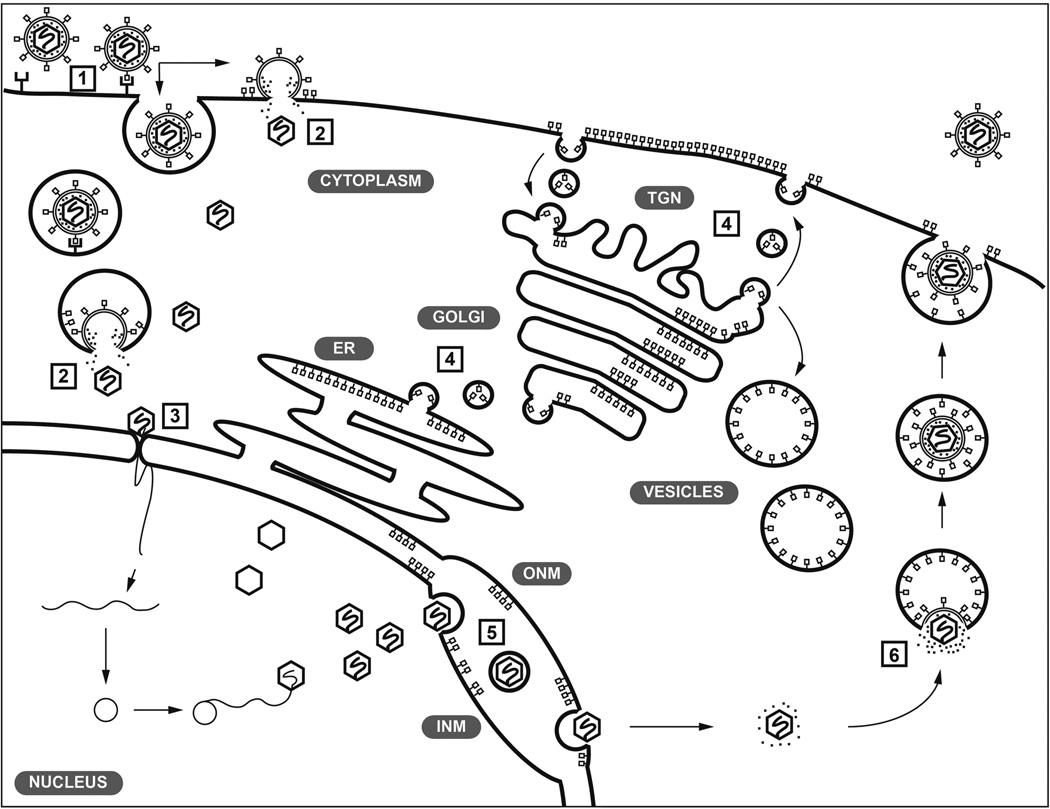Figure 1.
Model of the localization and trafficking of VZV glycoproteins during infection. VZV is presumed to use glycoproteins to bind cell surface receptors during attachment (1). The gB/gH-gL complex fuses the virion membrane with cell membranes either in endocytic vesicles or directly with the plasma membrane (2). The capsid is released into the cytoplasm and docks with a nuclear pore where the dsDNA genome is injected into the cell nucleus to initiate replication (3). Glycoproteins are synthesized in the endoplasmic reticulum (ER) and trafficked to the Golgi during maturation, exocytosed then endocytosed and trafficked to the trans-Golgi network (TGN) (4). Some glycoproteins, including gB, are trafficked to the nuclear envelope (inner nuclear membrane, INM; outer nuclear membrane, ONM) and might have roles in egress from the nucleus (5). Glycoproteins are trafficked from the TGN for incorporation into nascent virus particles (6). Adapted from [100].

